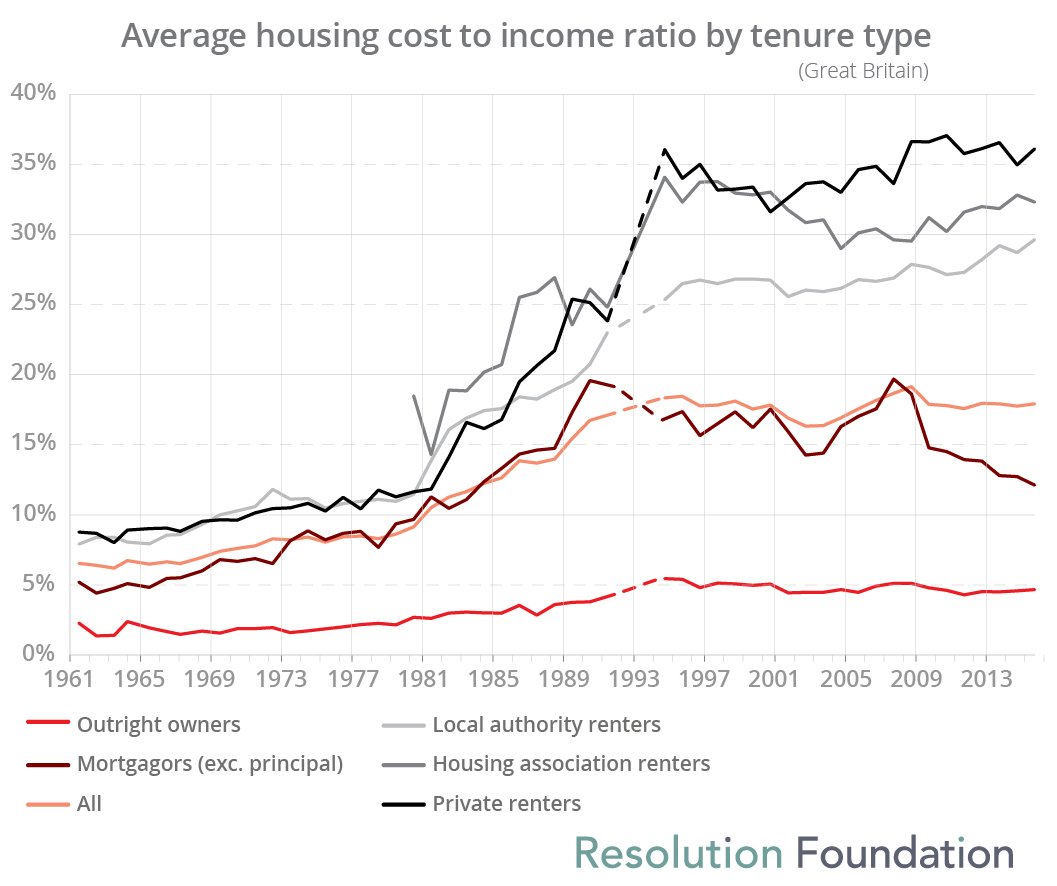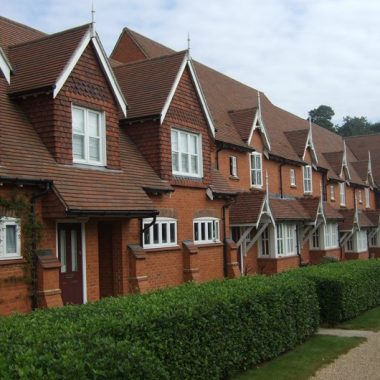December 2017 Property Investor´s Factfile
The Property Investor’s Factfile presents a range of relevant data from national / London house prices, the latest buy-to-let Limited Company (SPV) loan rates, LIBOR / SWAP rates and rentals to mortgage debt figures and information on the first-time buyer sector. Some noteworthy observations over the last month are outlined below:
Property Market Trends
- According to Halifax data, between October and November house prices rose by 0.5% (for the fifth consecutive month), reaching 0.5% (3.2% higher than in January). Russell Galley, managing director at Halifax Community Bank commented: “slower growth patterns are likely to continue for the foreseeable future” and also that “increasing affordability issues, as price increases continue to outstrip wage growth, are likely to curb housing demand and cause price growth to ease”;
- Land Registry-tracked property prices grew by 0.4% between August and September and increased by 5.4% on an annual basis. The new average UK house price is £226,367. According to the data, the North West saw the highest annual growth at 7.3%, followed by the South West (6.6%), the East Midlands (6.4%), Northern Ireland (6.0%), the East of England (5.9%), the West Midlands (5.7%), Yorkshire and The Humber (5.6%), the South East (5.5%), Wales (5.3%), the North East (4.4%), Scotland (3.1%) and London (2.5%);
- Nationwide data also reported slower annual house price growth – falling from £211,085 in October to £209,988 in November. According to Nationwide’s chief economist Robert Gardner, “while low mortgage rates, a lack of housing stock, and healthy rates of employment growth are providing support for property demand and propping up house prices, this is being partly offset by pressure on household incomes, which appears to be weighing on confidence”;
- According to Rightmove, 37% of properties listed on the portal have seen their prices reduced compared to when they were first put on the market – the highest level since 2012. The North East saw the highest asking price drop between October and November at -5%, followed by the West Midlands (at -1.4%); the East of England (at -1.3%); the South East (at -1.1%), the North West (at -0.8%), the South West (at -0.7%), Yorkshire and the Humber (at -0.6%), the East Midlands and Wales (both at -0.5%) and Greater London (at -0.2%);
- Other regional-specific data by Hometrack’s Cities House Price Index reported solid year-on-year growth of 7.9% in Manchester, 7.4% in Birmingham, 6.6% in Leicester, 6.6% in Bristol, 6.3% in Leeds, 5.9% in Portsmouth, 5.8% in Liverpool and 5.7% in Sheffield. Over the last year, house prices in Aberdeen and, interestingly, Oxford have fallen by 3.1% and 0.6% respectively;
- Although low sale volumes may skew the data somewhat, the Land Registry data reported 2.52% and 3.82% respective price drops in the City of Westminster and the City of London between August and September. Although Inner London [1] prices grew by 0.12% over this period, Outer London [2] prices witnessed a drop of 0.17%;
- At an estimated value of £1.338 trillion, Halifax estimates that London’s property market is valued more than the value of all homes in Scotland, Wales and the North of England combined;
- Halifax data also pointed to just 3.3% of UK property wealth being controlled by under 35s (the over 55s hold close to two-thirds of Britain’s property wealth).
Rental Market Observations
- Recent research in the Buy to Let Britain report by Kent Reliance estimates that the UK private rented sector is currently valued at approximately £1.4 trillion, increasing by approximately £82.6 billion over the course of 2017. There are close to 5.6 million households across the UK living in rented accommodation – 2.2% higher than at the end of 2016 and less than a third of the rate of increase seen in 2014. A survey within the report of 856 landlords (run in association with BDRC Continental) showed that among those that bought and sold properties in the three months to December 2017, investors with more than 10 properties made a net addition of one property. There was no such growth among those with fewer than five properties. Over the first three quarters of the year, seven out of ten buy-to-let properties were also acquired via Limited Companies (Special Purpose Vehicles) – an increase of 45% relative to 2016;
- The Your Move November 2017 Buy-to-Let Index indicated that average rents are up 2.4% year-on-year in England and Wales. Rental prices in the East of England grew faster than anywhere else in the year to October;
- The most recent HomeLet Rental Index report pointed to average rents across the UK rising by 0.9% in October relative to the same period in 2016. According to the research, rents rose in 11 of the 12 regions analysed on an annual basis. However, average rents secured in October 2017 were lower than in September (which has contributed to a significant slowdown in the annual rate of inflation);
- Some interesting data via Torsten Bell from the Resolution Foundation’s Twitter feed (@TorstenBell), replicated below, demonstrates how the private rented sector cost to income ratio continues to outstrip all other tenures:

Autumn 2017 Budget Implications for Buy-to-Let Property Investors / Traders
- No mention was made of any amendments to Section 24 of the Finance (No. 2) Act 2015. Readers may be interested in the Property Tribe’s interview with Iain Duncan Smith addressing the risks of this legislation in the coming year for smaller landlords;
- The the BBC’s budget calculator, developed by Deloitte, enables users to see the effects of the tax measures in the coming year;
- From April 2018 the basic rate income tax band will increase to £46,300;
- Corporation tax will reduce to 18% in 2018 and 17% in 2019;
- From January 2018, indexation tax relief for property company capital gains will be frozen. The allowance currently takes into account the effects of inflation when calculating chargeable gains;
- The 7-day waiting period at the start of the Universal Credit claim process has been removed. Claimants that can demonstrate hardship after a minimum of 5 days will be able to access one month’s payment in advance;
- Councils will have the right to charge a 100% Council Tax premium on empty properties. For some interesting commentary regarding these last two changes and how “the current government thinks buy-to-let isn’t all that,” Merryn Somerset Webb’s recent piece in the FT is well worth reading;
- Related to the above, the Treasury has confirmed that 50% of the savings from the Local Housing Allowance payment freeze will be effectively transferred into raising LHA rates in unaffordable areas through the Targeted Affordability Fund. An extra £40 million will therefore be made available in 2018-19 and £85 million in 2019-20. The aim is to ease the financial pressure for approximately 140,000 households;
- To complement the Help to Buy equity loan / ISA schemes, Stamp Duty Land Tax (SDLT) has been abolished for all first time buyers purchases valued at up to £300,000. Purchases of up to £500,000 will also be exempt for the first £300,000;
- The government’s target of building 300,000 homes a year by the mid 2020s is being supported by £44 million of funding, loans and guarantees;
- For tax year 2017/18, unincorporated landlords have the option to use a simpler fixed rate deduction calculation for miles travelled by car, motorcycle or goods vehicle for business purposes;
- The government will commission another review into the extent of land banking (the alleged practice of developers holding on to land with the deliberate objective of not building to boost house prices and profit levels). Depite widespread disagreement, Shelter analysis research indicated that ten of the largest listed housebuilders could effectively bring another 404,040 homes into the marketplace. Developersrs blame the tortoiselike planning system, labour issues, poor infrastructure (particularly on larger sites) amongst other issues. A statement in the Home Builder’s Federation report on land banking provides a candid point of view: “A house building company will be judged by investors on the land that is available to it. If one considers land to be a housebuilder’s most important raw material, a company seeking investment with little or no viable land in its ownership would be unlikely to attract the investment required to finance construction and generally operate as a well-functioning business”.
Macro-Economic Conditions for Buy-to-Let Property Investors / Traders
- Knight Frank’s UK Housing Market Forecast pointed to a series of risks to the UK housing sector, highlighted in order: (1) Brexit – an unfavourable deal negotiated in Brussells, or prolonged uncertainty past 2019. In addition to wider economic implications, a poor or no deal could impact London’s status as a global financial hub; (2) Political Upheaval – an unstable Cabinet triggers another general election which, in turn would undermine economic and consumer confidence; (3) Interest Rates – the Bank of England’s base rate rise in response to inflationary pressures may prompt a buying slowdown; (4) UK Economy – growth lags behind expectations; (5) Geo-Political Factors – ongoing tensions prompt a global slowdown which filters into the UK economy and (6) Property Tax Changes – additional charges may curb purchasing activity;
- Inflation held steady at 3% in November as Office of National Statistics (ONS) data pointed to wage growth picking up to 2.5% in the three months to October. However, in real terms, inflation actually fell 0.5% (meaning there have been seven months of negative pay growth);
- Unemployment also remained steady at 4.3%, it’s lowest since 1975 and down from 4.8% in the same period of 2016 (although these statistics do not reflect issues such as underemployment, zero hours contracts etc.);
- After a weak start of 2017, productivity increased by 0.9% in the three months to September – the strongest growth rate for six years.
Buy-to-Let Investing / Financing Conditions
- Between the start of November and December, the 1 year SWAP rate marginally decreased by 0.007 points and the 5 year SWAP rate rose by just 0.002 points;
- According to Moneyfacts, average 2 year buy-to-let tracker rates have increased by 0.2 percentage points to reach 2.43 per cent since the Bank of England base rate in early November;
- This month’s property investor’s factfile points to some competitive Limited company products in spite of the base rate rise. Examples include a Landbay LIBOR-Linked product at 3.64% for 10 years with a £1,125 loan fee. The State Bank of India’s also continues to expand into this space, offering a 5-year fixed SPV mortgage with a 2.99% pay rate and a £937 loan fee. For more information and to discuss your specific borrowing circumstances please get in touch with paul.lowcock@bespokefinance.info or direct on 01133 203240.
First-Time Buyers / Help to Buy
- According to the Intermediary Mortgage Lenders Association (IMLA), lending on new build properties is being distorted by the Government’s ‘Help to Buy’ scheme. A report entitled ‘Keeping Britain building: mortgage lending in the new build sector’ pointed to a worrying “dependency” on the equity loans which accounted for 27 per cent of all new housing completions between April 2013 and March 2017.
- According to research by estate agency James Pendleton, housebuilders have been increasing the price of leasehold homes in anticipation of a Government crackdown. Using Land Registry figures, the average cost of a leasehold house in November was at £256,100 – a 4.3% rise, whereas freehold prices have risen by just 2% to £306,550. According to Lucy Pendleton, who led the research: “developers have realised the commercial value of leases and they have become a ticket for profiteers who are able to take advantage of buyers with little choice but to proceed to get their foot on the ladder.” The data was supported by Sebastian O’Kelly, of the Leasehold Knowledge Partnership who commented: “Nationwide, which won’t lend on them, thinks there are 100,000 leasehold houses and flats that are unsellable owing to onerous lease terms”. He echoed comments made above by the IMLA that it is “tragic” that Help to Buy has fuelled the problem.
Please feel free to follow us on Twitter and receive regular updates of relevance to property investors via our Facebook page. If you have not already, we would also encourage you to subscribe to our monthly e-bulletin (and receive our latest e-book and comprehensive buy-to-let financial calculator). Please click on the animation below for more information and to fill in your details in the “PLEASE LEAVE YOUR DETAILS HERE” box.
[1] The Land Registry classifies Inner London as constituting the following boroughs: Camden, City of London, Hackney, Hammersmith & Fulham, Haringey, Islington, Kensington and Chelsea, Lambeth, Lewisham, Newham, Southwark, Tower Hamlets, Wandsworth and Westminster.
[2] Informally referred to as the “donut” areas of London: Barking & Dagenham, Barnet, Bexley, Brent, Bromley, Croydon, Ealing, Enfield, Greenwich, Harrow, Havering, Hillingdon, Hounslow, Kingston upon Thames, Merton, Redbridge, Richmond on Thames, Sutton and Waltham Forest.










